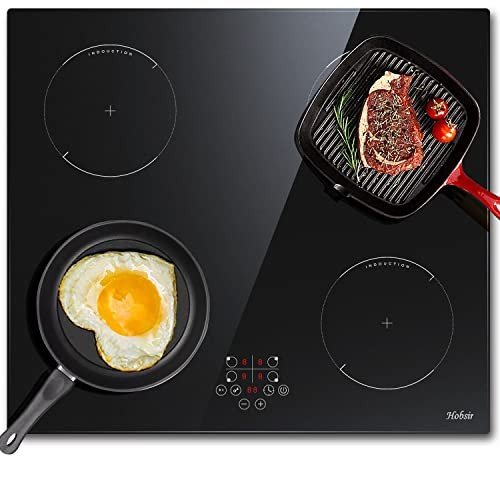Understanding Ovens and Hobs: A Comprehensive Guide
Cooking has come a long way since the days of open flames and rudimentary cooking techniques. Today, ovens and hobs are at the heart of contemporary kitchens, offering flexibility, performance, and a range of cooking choices. Whether you are an amateur cook or an experienced chef, understanding the differences, features, and functions of these devices is crucial for optimizing culinary potential. This short article breaks down the numerous types of ovens and hobs offered on the market, their performances, and how to select the ideal appliances for your kitchen.
What is an Oven?
An oven is an enclosed area designed for heating and cooking food, using numerous methods such as baking, roasting, and broiling. Ovens come in numerous types, each serving distinct cooking preferences and requirements.
Types of Ovens
Conventional Ovens:
- Use gas or electrical energy for heating.
- Usually consist of a heating element at the top and bottom.
- Suitable for standard baking tasks.
Convection Ovens:
- Use a fan to circulate hot air, promoting even cooking.
- Ideal for baking, roasting, and reheating.
- Lowers cooking time and enhances flavor.
Steam Ovens:
- Utilize steam to prepare food while keeping wetness and nutrients.
- Excellent for health-conscious cooking, such as veggies and fish.
Microwave Ovens:
- Use electromagnetic radiation to heat food rapidly.
- Best for reheating leftovers or cooking basic meals.
Wall Ovens:
- Built into the wall, conserving space in the kitchen.
- Offered in numerous configurations, including single or double ovens.
Key Features of Ovens
- Temperature Control: Precision heating for various baking and cooking processes.
- Self-Cleaning Options: Some models have self-cleaning modes that use high temperatures to burn food residue.
- Smart Features: Wi-Fi connection enables remote pre-heating, tracking, and recipe management through smart devices.
What is a Hob?
A hob is a cooking surface, frequently referred to as a stove or cooktop, where pots and pans is put for heating. Hobs are readily available in different materials, sizes, and heating approaches, accommodating diverse cooking requirements.
Types of Hobs
Gas Hobs:
- Utilize gas burners for direct flame cooking.
- Deal exact temperature level control and are favored by lots of professional chefs.
Electric Hobs:
- Use electric coils or smooth tops.
- Some designs are equipped with induction technology, supplying rapid heating through electromagnetic energy.
Induction Hobs:
- Cookware needs to be made of magnetic materials.
- Really energy-efficient, providing quick heat and decreasing burn threats.
Ceramic Hobs:
- Feature a glass-ceramic surface area with heating elements beneath.
- Easy to tidy but can be less energy-efficient than induction hobs.
Key Features of Hobs
- Burner Configuration: Varies from 2 to 6 burners, depending upon model and size.
- Power Levels: Multiple settings permit higher accuracy in cooking.
- Safety Features: Options like flame failure gadgets and kid lock settings ensure security during cooking.
Picking the Right Oven and Hob
Picking the ideal oven and hob for your kitchen includes careful factor to consider of numerous elements. Below is a list of concerns to guide your selection procedure:
- What is your main cooking design?
- Just how much kitchen space do you have?
- What is your spending plan?
- Do you prefer gas or electric home appliances?
- Are additional features like wise connection crucial to you?
Table Summary of Key Differences Between Ovens and Hobs
| Function | Oven | Hob |
|---|---|---|
| Functions | Baking, roasting, broiling | Boiling, frying, sautéing |
| Cooking Method | Confined heat | Direct cooking surface area |
| Temperature Control | Adjustable settings | Stove settings |
| Types | Electric, gas, convection, microwave | Gas, electric, induction, ceramic |
| Cooking Capacity | Larger (can prepare multiple meals) | Smaller (focus on immediate cooking) |
| Cleaning | Self-cleaning options offered | Generally manual cleansing required |
Upkeep Tips for Ovens and Hobs
Appropriate care and upkeep of your cooking appliances extend their lifespan and effectiveness. Here are necessary upkeep tips:
Regular Cleaning:
- Clean the oven interior after each usage to prevent residue buildup.
- Clean down hob surface areas after cooking to avoid discolorations.
Examine Seals:
- Ensure the oven door seals are intact to preserve energy effectiveness.
- Change worn-out gaskets and seals as needed.
Check Burners and Elements:
- For gas hobs, look for blockages in burners.
- For electric hobs, check coils and surfaces for signs of wear.
Frequently asked questions
Can I utilize any pots and pans on induction hobs?
- No, induction hobs only work with magnetic cookware, such as cast iron or stainless steel.
What is the most energy-efficient cooking device?
- Induction hobs are generally the most energy-efficient alternative, utilizing less energy than standard gas or electric designs.
How often should I clean my oven?
- It's a good idea to clean your oven every couple of months, or more often if you utilize it frequently.
Can I set up an oven and hob individually?
- Yes, both home appliances can be installed individually based upon kitchen design and space.
What should I think about when installing a gas hob?
- Make sure appropriate ventilation and stick to local safety codes. Ovens Online is recommended to have a professional set up gas devices.
Understanding the functions, types, and maintenance of ovens and hobs can significantly improve your cooking experiences. Choosing the best devices tailored to your cooking design, kitchen space, and safety requirements can make all the distinction in attaining culinary success. By being informed about your choices, you can take pleasure in a more effective and pleasurable cooking journey, bringing tasty meals to your table with ease.

